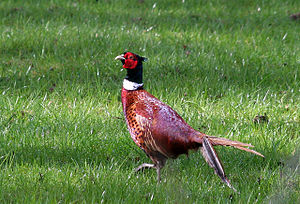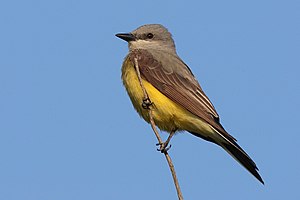| Image via Wikipedia |
Workshop items include big game and deer regulations
PRATT — The Kansas Wildlife, Parks and Tourism Commission will conduct a public meeting and hearing on Thursday, Jan. 5, 2012, at Kansas Wesleyan University’s Hauptli Student Center, 100 E. Claflin Ave. in Salina. The afternoon session will begin at 1:30 p.m. and recess at 5 p.m., and the evening session will begin at 7 p.m.
The afternoon session will begin with time for public comments on non-agenda items, followed by a general discussion period on the following topics:
- Secretary’s remarks
- Agency and state fiscal status
- 2012 legislative agenda
- Commissioner Big Game Permit drawing
- Tourism Division briefing
- Update on the Voluntary Public Access/Habitat Improvement Program
- Status report on the upland bird season
- Wildlife rehabilitation briefing
The afternoon workshop session will include discussion of preliminary recommendations on the following regulations in preparation for potential future regulatory action:
- Big game permanent regulations
- Potential changes in deer regulations for 2012
- Big game 25-Series regulations – deer
- Big game 25-Series regulations – elk/antelope
- Falconry regulations; and
- Fall turkey regulations.
The commission will recess at 5 p.m., then reconvene at 7 p.m. at the same location for discussion on Public Land regulations and to conduct a public hearing to set the Free Park Entrance and Free Fishing days.
There will be time in both the afternoon and evening sessions for public comment on topics that are not on the agenda. If necessary, the commission will recess on Jan. 5 and reconvene at the same location at 9 a.m., Jan. 6, to complete unfinished business.
Live video and audio streaming of this meeting will be broadcast through the Kansas Department of Wildlife, Parks and Tourism website, www.kdwpt.state.ks.us.
If notified in advance, the department will have an interpreter available for the hearing impaired. To request an interpreter, call the Kansas Commission for the Deaf and Hard of Hearing at 1-800-432-0698. Any individual with a disability may request other accommodations by contacting the Kansas Wildlife, Parks and Tourism Commission secretary at 620-672-5911.
The next commission meeting is scheduled for March 22 in Topeka at the Kansas Museum of History, 6425 SW 6th Avenue.
















